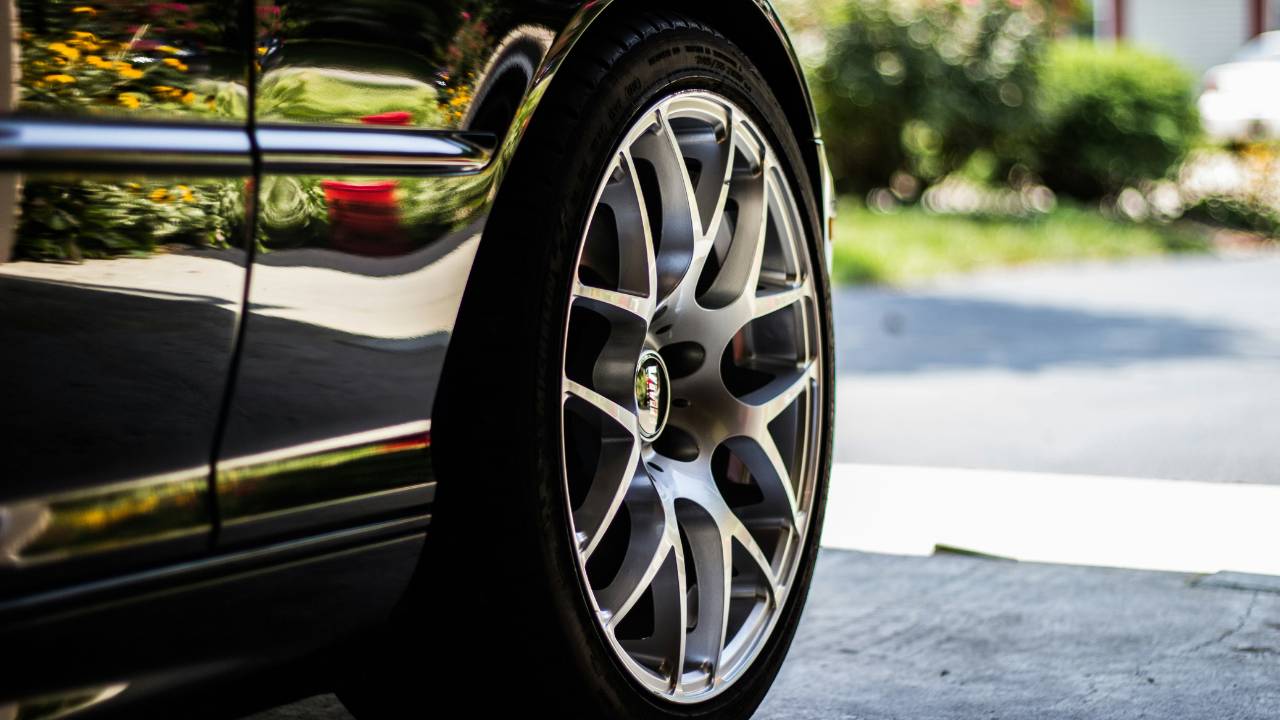
Selecting the right tyres for your corporate fleet is a decision that goes beyond mere cost. Choosing the most suitable tyres can significantly impact the efficiency, safety, and longevity of your commercial vehicles. Proper tyre management can lead to improved fuel efficiency, reduced maintenance costs, and enhanced driver safety, which are critical factors for any company managing a fleet.
As a fleet owner, you’re aware that each commercial vehicle in your company requires specific attention tailored to its usage patterns and load requirements. Considering the diversity of driving conditions and routes, making strategic tyre choices will ensure that your vehicles perform at their best, regardless of the environment. The right tyres contribute not only to the durability and performance of the vehicles but also to their safety on the road.
Balancing cost and performance is a constant challenge for any fleet owner. Opting for high-quality tyres may seem like a higher initial investment, yet the long-term savings on fuel, reduced downtime, and maintenance make this an economically sound decision. Understanding the unique needs of your corporate fleet will allow you to make informed and strategic tyre choices that benefit your company in the long run.
Understanding the Impact of Tyres on Fleet Efficiency
Efficient tyre choices directly influence a corporate fleet’s operational costs and performance. Selecting the right tyres significantly impacts fuel consumption and overall ownership expenses.
Fuel Efficiency and Tyre Selection
Choosing fuel-efficient tyres can lead to noticeable savings in fuel costs. Rolling resistance is critical; tyres with lower rolling resistance require less energy to move, thereby conserving fuel. These tyres help maintain optimal fuel economy, particularly important for high-mileage fleets.
In addition to rolling resistance, tyre pressure plays a role. Under-inflated tyres can increase fuel consumption by up to 3%. Regularly checking and maintaining correct tyre pressure ensures your fleet operates efficiently.
Material and tread design also affect fuel efficiency. Certain compounds and tread patterns are engineered to reduce energy loss. Using tyres specifically designed for fuel efficiency not only saves on fuel but contributes to the overall reliability and performance of the fleet.
Calculating Total Cost of Ownership for Tyres
Understanding the total cost of ownership (TCO) for tyres involves more than just the initial purchase price. TCO encompasses the cost per mile, considering factors like longevity and maintenance. High-quality tyres might have a higher upfront cost but generally last longer and perform better, reducing replacement frequency.
Frequent inspections and tyre rotations are essential. Properly maintained tyres wear evenly, extending their lifespan. This maintenance lowers your cost per mile, making high-quality tyres a worthwhile investment.
Retread options can also impact TCO. Retreading extends the life of existing tyres, offering cost savings and being environmentally friendly. By focusing on these aspects, you can manage tyre expenses effectively, ensuring your fleet remains both cost-efficient and reliable.
Selecting the Right Tyres for Your Fleet

Choosing the appropriate tyres for your commercial fleet is crucial for both safety and efficiency. Consideration of tread design and vehicle purpose, alongside the variations in tyre types based on wheel position, can make a significant difference.
Tread Design and Vehicle Purpose
Tread design greatly influences the performance of your tyres. For instance, commercial vehicles that primarily operate in urban environments might benefit from tyres with ribbed tread patterns. These patterns enhance traction and handling on paved roads.
Conversely, vehicles frequently travelling off-road or on construction sites require tread designs with deeper grooves and aggressive patterns. These designs provide better grip on uneven terrains and extend the tyre life by preventing excessive wear.
Think about the specific tasks your vehicles undertake daily. A company like Shoes for My Car Ireland offers an extensive selection to suit different operational needs, ensuring you find the tyres best suited to your fleet’s activities.
Tyre Variations and Wheel Position
Front and rear tyres may need different specifications based on their wheel position and the demands placed upon them. Front tyres typically handle more of the steering and braking, making them prone to faster wear. Thus, they may require a harder compound or reinforced sidewalls for durability.
Rear tyres, on the other hand, often bear more of the load. Selecting the right tyres with added load capacity can prevent premature wear and improve overall safety.
It’s also essential to consider the benefits of all-season versus specialised seasonal tyres. All-season varieties provide versatility, whereas summer and winter tyres offer optimised performance in extreme temperatures.
Finding the right balance ensures maximum efficiency and longevity for your fleet’s tyres.
Tire Management Strategies
Effective tyre management optimises performance and reduces costs. This involves tracking usage, preventive maintenance, and regular inspections. These steps ensure your fleet remains safe and efficient.
Implementing a Tire Management Programme
Creating a comprehensive tyre management programme is essential for the longevity and performance of your fleet. Begin by maintaining detailed records for each tyre, including installation dates, tread depth, and rotation schedules. This allows you to track everything accurately.
Invest in a tyre management software to streamline data entry and retrieval. Software tools help you monitor wear patterns and forecast when tyres need replacement. Establish clear guidelines for tyre selection and ensure all drivers and maintenance staff adhere to these standards.
Training is crucial. Equip your team with the knowledge of how to check for correct inflation, identify early signs of wear, and properly rotate tyres. Establish a regular tyre rotation schedule to ensure even wear across all tyres. By following these practices, you avoid unnecessary costs and improve safety.
The Role of Regular Inspections and Maintenance
Regular inspections and maintenance are critical elements of tyre management. You should schedule frequent checks to identify issues like uneven wear, cuts, or punctures before they become severe problems.
Check tyre pressure at least once a week. Proper inflation extends tyre life and enhances fuel efficiency. Under-inflated or over-inflated tyres can lead to reduced performance and increased risk of blowouts. Alignments should also be checked regularly to prevent uneven wear.
Look into a preventive maintenance programme that includes regular balancing and alignment checks. Tracking these maintenance activities ensures that you address issues promptly. Regular tyre cleaning also helps remove debris that can cause damage.
By ensuring proper maintenance and timely inspections, you reduce the likelihood of unexpected failures and keep your fleet running smoothly and safely.
The Economics of Retreading and Tyre Life Extension
Investing in retreadable tyres and understanding the retreading process can lead to substantial savings for corporate fleets. These strategies help prolong tyre life, reduce costs, and ensure efficient resource usage.
Investing in Retreadable Tyres
Choosing tyres designed for retreading can be a cost-effective investment for your fleet. These tyres are built with robust casings that allow for multiple retreading cycles. While the initial outlay may be higher, the long-term savings are significant.
Retreadable tyres typically have stronger sidewalls and tread areas. This durability enhances their lifespan and makes them a practical choice for fleets that experience high wear and tear. By selecting tyres with good retreadability, you reduce the frequency of tyre replacements.
This investment not only cuts costs but also contributes positively to your sustainability goals. Less frequent tyre disposal means a smaller environmental footprint. Additionally, consider that the retreading process uses fewer resources and less energy than manufacturing new tyres.
Understanding the Retreading Process
The retreading process breathes new life into worn tyres, extending their usability and saving costs. Retreading involves stripping away the worn tread and replacing it with a new one, while retaining the original casing.
This process is meticulously controlled to ensure safety and performance. Modern retreading techniques include advanced inspections and stringent quality checks. This guarantees that the retreaded tyres meet standards comparable to new tyres.
Retreaded tyres perform well in various operations, maintaining traction and reliability. They are especially suitable for heavy-duty and long-haul purposes, where tyre wear is rapid. By understanding and engaging in retreading, you optimise your tyre management and improve your fleet’s bottom line.
Advancements in Tyre Technology for Fleet Owners

Innovations in tyre technology are shaping the future of corporate fleets. These advancements focus on improving both performance and sustainability, helping you boost your fleet with quality tyres that meet your business needs.
Evolving Tyre Innovations
Recent developments in tyre technology have significantly enhanced performance, durability, and safety. Self-healing tyres are now more common, automatically sealing small punctures and reducing downtime. You’ll also find advancements in tyre pressure monitoring systems (TPMS) that allow for real-time tracking of tyre conditions, promoting safer and more efficient driving.
Run-flat tyres offer another critical innovation, allowing you to continue your journey even after a puncture, reducing the risk of being stranded. Smart tyres equipped with sensors can provide valuable data on tyre wear and tear, enabling better maintenance and optimised performance.
Adapting to Sustainable Mobility Trends
Sustainability in tyre technology is becoming increasingly important. Manufacturers are now focusing on creating tyres made from eco-friendly materials, including recycled rubber and natural oils. These sustainable options contribute to reducing your fleet’s carbon footprint and promoting environmentally friendly practices.
Energy-efficient tyres are another development, designed to lower rolling resistance and improve fuel efficiency. Adopting these tyres can lead to significant cost savings and reduced environmental impact. Comfort is not compromised either, as these tyres provide a smoother ride, ensuring both driver satisfaction and reduced wear on your vehicles.
By staying updated with these advancements, you can make informed decisions to boost your fleet with quality tyres and support sustainable mobility.
Tyre-Related Safety Considerations
Safety features involving tyres are crucial to ensure the secure and efficient operation of your corporate fleet. Proper tyre maintenance includes maintaining optimal air pressure and addressing any signs of irregular wear and tread depth.
Maintaining Optimal Tyre Pressure
Tyre inflation is vital for maintaining tyre safety and performance. Under-inflated tyres can reduce fuel efficiency and lead to tyre overheating, causing premature wear and potentially dangerous blowouts. Conversely, over-inflated tyres may lead to reduced traction, especially in adverse weather conditions.
You should regularly check the air pressure of your tyres. It is important to use a reliable gauge to ensure accurate readings and adjust them according to the manufacturer’s recommendations. Poor tyre maintenance can also impact the handling and braking of your fleet, putting your drivers’ safety at risk.
Addressing Irregular Wear and Tread Depth
Irregular tyre wear can be an indicator of underlying issues such as misaligned wheels, improper tyre inflation, or worn suspension parts. Regular inspections allow you to identify and address these problems early. Irregular wear patterns can significantly impact the tyre’s effectiveness and safety.
Ensure that the tread depth remains above the legal limit to maintain optimal grip on the road. Using a tread depth gauge can help you measure this accurately. Replacing tyres when the tread is worn down can prevent accidents and enhance the safety of your fleet. Proper alignment and rotation schedules also help distribute wear more evenly, extending the life of the tyres and maintaining safety standards.
Partnerships and Support Systems
Ensuring strategic partnerships and robust support systems can significantly enhance the efficiency of your corporate fleet. The right industry partners and strong warranty programmes can lead to cost savings and improved fleet performance.
Choosing the Right Industry Partners
Selecting the right partners for your fleet tyres involves more than just price. Consider brands like Bridgestone, which offer proven reliability and performance. Look for partners who align with your vision for sustainability and innovation. This can lead to long-term benefits such as reduced downtime and enhanced safety.
Evaluate the level of commitment from potential partners. Companies that invest in research and development, provide training programmes, and have a strong environmental stance can significantly impact your fleet’s success. Building strong relationships with trusted and reputable partners is key to long-term fleet efficiency and effectiveness.
Warranties and Support for Fleet Tyres
An effective warranty programme is crucial for fleet customers. It provides peace of mind and financial protection. Warranties from leading manufacturers like Bridgestone often cover a range of issues, from manufacturing defects to road hazards. Comprehensive warranties can reduce unexpected costs and ensure consistent performance.
Support systems, including around-the-clock customer service, emergency roadside assistance, and regular maintenance checks, are equally important. Reliable support can minimise disruption and keep your fleet on the road. Partner with providers who offer robust support systems tailored specifically for corporate fleets to maximise uptime and fleet productivity.
Future Trends: EVs and Tyre Technology

In the coming years, the rise of electric vehicles (EVs) will significantly influence tyre technology and management. These changes hold particular relevance for corporate fleets, impacting both operational efficiency and geographical considerations.
Impact of Electric Vehicles on Tyre Management
Electric vehicles bring unique demands for tyre management. Their heavier batteries cause increased wear, necessitating tyres specifically designed to withstand the additional weight. Furthermore, the high torque of EVs requires tyres with improved grip and durability. Investment in innovative tyre solutions tailored for EVs can extend fleet longevity and optimise running costs.
Noise reduction is another critical factor. Tyres designed for EVs often feature specific tread patterns that reduce road noise, ideal for cities where noise pollution regulations are stringent. By focusing on tyres that target these specific requirements, you can ensure better resource management and asset optimisation, keeping your fleet compliant and cost-effective.
Geographical Considerations for Tyre Solutions
The geographical area in which your fleet operates plays a crucial role in selecting appropriate tyre solutions. For instance, European companies may face diverse weather conditions requiring all-season or winter tyres. Efficient tyre management solutions that account for such variability can help maintain safety and performance standards in different regions.
Road quality is another factor. Urban environments with well-maintained roads may benefit from tyres focused on longevity and noise reduction. In contrast, rural areas might need more robust, puncture-resistant options. Tailoring your tyre solutions to geographical needs ensures fleet safety and efficiency, minimising downtime and maintenance costs.
By focusing on these geographical and operational considerations, your corporate fleet can adapt seamlessly to emerging EV trends, enhancing both performance and cost efficiency.
Conclusion
Choosing the right tyres for your corporate fleet is a critical decision. It affects safety, cost-efficiency, and vehicle performance. By considering factors such as fuel efficiency, durability, and the specific needs of your fleet, you can make informed choices.
Additionally, investing in high-quality tyres contributes to the longevity of your vehicles. This not only saves money on replacements but also ensures your fleet remains reliable and safe.
Remember to regularly evaluate tyre performance. Routine checks and proper maintenance are essential. They help you get the most out of your investment and keep your fleet running smoothly.
By paying attention to your tyre choices, you’re taking essential steps towards strengthening your business for the future. Enhanced performance and cost savings are just some of the benefits you can expect.
This approach reflects a commitment to both safety and efficiency. It positions your company for long-term success. So, take the time to make strategic tyre choices that align with your business goals.
